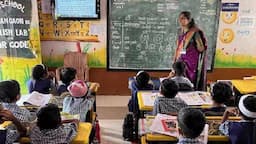The United Nations Population Fund's (UNFPA) latest report, the State of World Population - 2024, has unveiled significant insights into India's population dynamics and the state of sexual and reproductive health within the country. With India leading globally with an estimated population of 1.44 billion, surpassing China's 1.425 billion, the report sheds light on key demographic trends and highlights pressing reproductive health challenges faced by the nation.
Key Population Trends
India's population, which stood at 1.21 billion during the 2011 census, is projected to double in 77 years, indicating a rapid growth trajectory. The report delineates the age distribution within the population, revealing that 24% are aged 0-14, 17% aged 10-19, and 26% aged 10-24. Furthermore, 68% fall within the working-age group of 15-64, while 7% are aged 65 and above. The report also presents gender-specific life expectancy figures, with men having a life expectancy of 71 years and women 74 years.

Reproductive Health Challenges

Despite advancements in sexual and reproductive health over the past three decades, the report underscores persistent challenges, particularly among marginalized communities. Child marriage remains prevalent, with 23% of marriages occurring between 2006-2023. While maternal deaths in India have notably decreased, accounting for 8% of global maternal fatalities, certain groups, such as indigenous women and those with disabilities, continue to face disproportionately high maternal mortality rates. Additionally, women from vulnerable communities are more susceptible to gender-based violence, further exacerbating their sexual and reproductive health risks.
Intersectional Challenges
The report highlights the intersectional nature of reproductive health challenges, emphasizing how factors like climate change and caste-based discrimination compound vulnerabilities among marginalized groups. Indigenous communities, already marginalized, are particularly vulnerable to the adverse impacts of climate change, further exacerbating existing health disparities. Similarly, caste-based discrimination perpetuates inequalities in access to healthcare services, hindering efforts to improve reproductive health outcomes among disadvantaged populations.
Conclusion
UNFPA's State of World Population - 2024 report provides a comprehensive overview of India's population trends and reproductive health challenges, highlighting the need for targeted interventions to address disparities and promote equitable access to sexual and reproductive healthcare services. As India navigates its demographic transition, concerted efforts must be made to prioritize the sexual and reproductive health rights of all individuals, particularly those from marginalized communities, to ensure inclusive and sustainable development for the nation.










-1920x1080.jpg&w=256&q=75)





